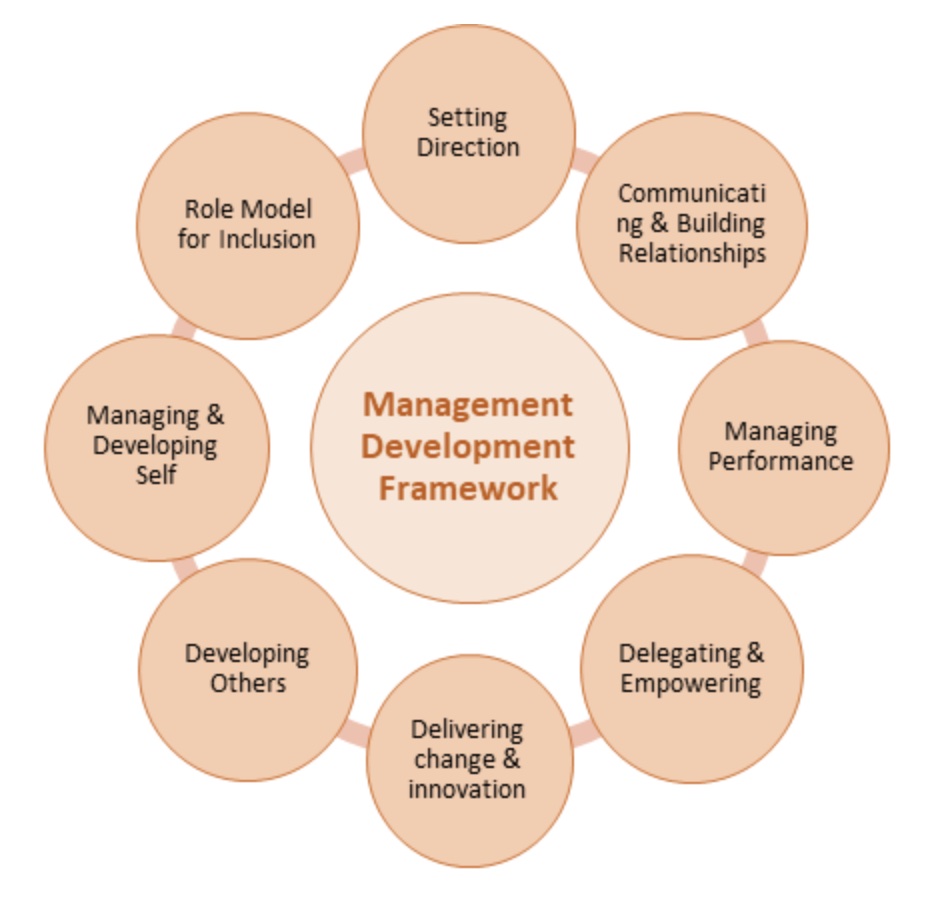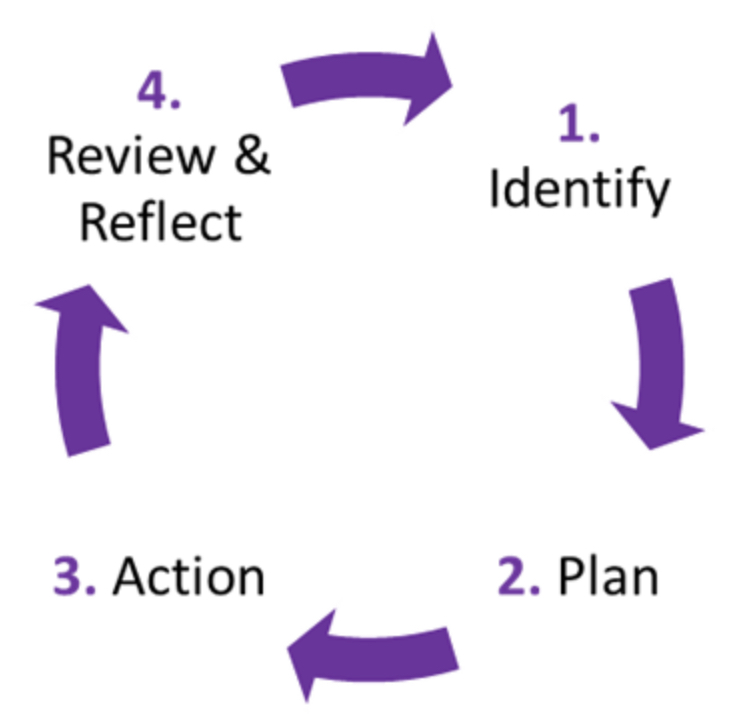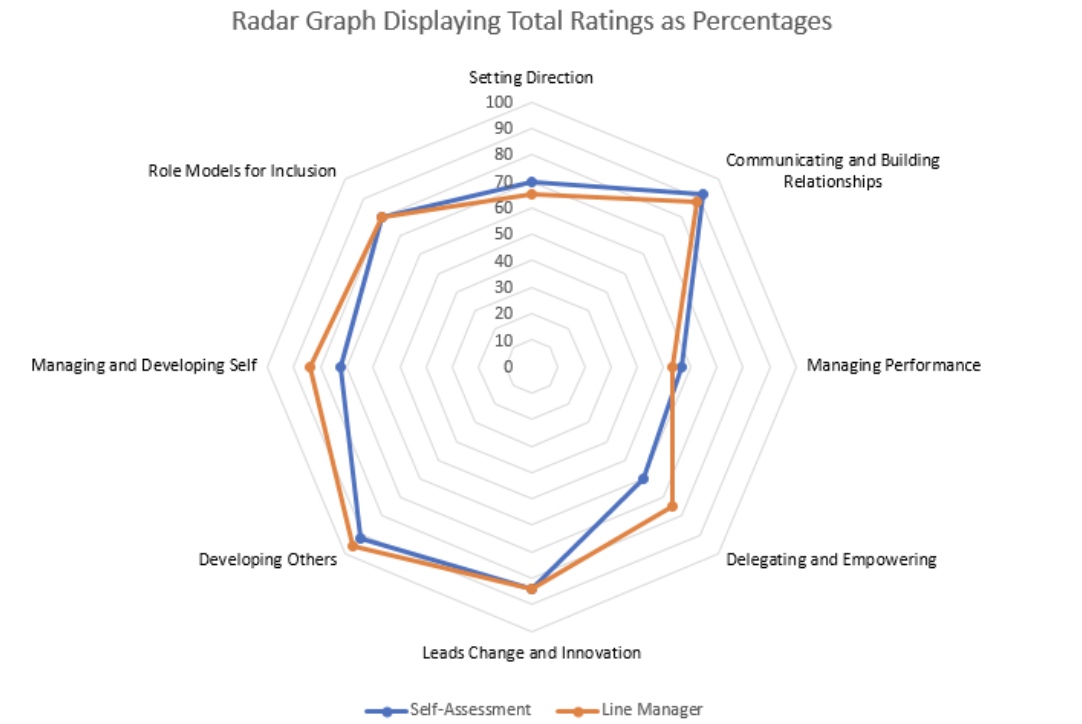How to use the Management Development Framework and 180 Self-Assessment Tool to development planning

This ‘how to’ has been developed as a guide for current and aspiring line managers to use the Management Development Framework as a tool to support reflection, building self-awareness and planning for developing key line management skills. Learning & OD encourage all existing and aspiring line managers to use the Management Development Framework to reflect on their strengths, gaps and development areas, to support consistent high performing line-managers that embody Our Values across the University.
This guide is based specifically around the Management Development Framework, which was developed by the Learning & OD team and then tested with line-managers in Central PS areas. The framework identifies eight management qualities and associated practices which define what effective line management looks like at the University. A development guide has been created to support this activity, with curated learning resources and suggested on-the-job learning activities to support development activity against each of the management qualities.
Applications for this tool
The Management Development Framework can be used in a number of different contexts to support building capability and progression.
- Increasing self-awareness: The framework and supporting 180 assessment tool can help managers and aspiring managers develop more awareness of their strengths and areas for development.
- Supporting personal development: The framework is backed up by resources and learning ideas to support personal development, based around the 70:20:10 model, with a strong emphasis of learning on the job.
- Building consistent capability: The framework can support a more consistent approach to management capability development across the University, providing clear expectations and consistent language and resources.
- Underpinning L&OD courses: The framework is linked to the Managing at Manchester programme and can be connected to various L&OD management short courses and self-direct online learning playlists.
- Setting performance expectations and supporting P&DRs: The framework, self-assessment tool and resources can support managers in setting clear expectations with their managers and supervisors, and support performance and development conversations and planning.
- Providing career pathways and development: The framework provides managers and aspiring managers with a clear set of competencies to develop, in order to prepare for promotion or new roles.
Please contact your L&OD Partner for support or guidance for using the tool to support your development, or to support the development of a member of your team.

The Development Planning Cycle
The personal development planning cycle outlines the four key stages of the process, and provides a helpful overall structure. Management development planning should not be seen a one-off process, but something that you are continually focussing on and prioritising throughout the year. Crucially for this to be sustainable, it’s important to identify how you can integrate your development into on-the-job activity that you can undertake while doing your job.
Purpose and Context
At the outset it’s important to discuss with your line manager why you would like to develop your management skills. Key points to cover at this stage could be:
- Your career aspirations and potential in line management and related roles
- The current management aspects of your role that you particularly enjoy / feel good at, and the management aspects that you enjoy less / feel you are less good at
- The demands of their management role now and in the future (that you may need to prepare for)
- The future direction of the Faculty/Department/University, and skills which may become important for you as a manager
- A general discussion about the Management Development Framework, whether there are any specific elements you are drawn to, if you feel some areas of particularly important for your role, etc.
This conversation is really important, as it provides the context to position your development, and provides you with a sense of purpose for why you are focussing on your development as a manager.

Assess against the Framework
After establishing the purpose and context for the activity, use the 180 self-assessment tool to identify explore your strengths and development areas.
This tool enables you to rate yourself for how you see your current level of capability across the elements of the framework. Then, your manager can also complete the tool to provide a rating reflecting how they view your capabilities against each management quality. The result is a document which provides a graphical summary of the results, together with a summary of ratings and contextual comments from both you and your manager.
Depending on how similar the ratings are for you and your manager, it may be helpful to spend time discussing rationale for the ratings and time reflecting, before determining your position for each of the competencies. Your manager’s ratings can be particularly helpful in helping you identify any ‘blind spots’, but also help you appreciate strengths that you didn’t recognise you have.
The tool includes a radar graph provides a clear visual summary of the ratings.
The tool also provides a clear summary of ratings and text comments from both parties, leading the way towards the creation of a personal development plan.
After you have completed the tool it is important to spend time discussing the results together.
- Are there any management qualities which are rated noticeably stronger than others?
- Are there any management qualities which are rated noticeably weaker than others?
- How consistent are your ratings? If there are areas where there is variability, explore why this may be.
This conversation may result in identifying hidden strengths or blind spots. It’s important you have an open and honest discussion about these, and be open to feedback from your manager. It may be helpful to share what you see as recent examples of where you have demonstrated the Management Qualities in action to help, and ask for your manager to give examples too, to illustrate your reasons for the rating in question.
Define development objectives
Following your discussion, this should culminate in a series of development objectives for you. It is important to ensure that these are specific and relate back to your identified purpose / direction for your management development as much as possible. For example this shouldn’t just be to focus on a specific management quality or practice, it should include why you are focussing on it, and what you are aiming to achieve.
Some example management development objectives:
- Lead discussions about EDI, the role of the team, and steps that can be taken to promote diversity and inclusion at an upcoming team meetings. Work with individual team members to ensure they each identify an EDI objective to be included as part of your P&DR (Management Quality: Role Model for Inclusion)
- Use departmental/faculty goals to identify a series of team and individual objectives and monitor through 1:1s and P&DRs. Have conversations in team meetings and 1:1s about how these goals connect the wider University strategy (Management Qualities: Setting Direction, Managing Performance)
- Undertake coaching conversations in 1:1s to empower the team and encourage them to solve problems and identify solutions (Management Qualities: Delegating and Empowering, Developing Others)
It is important to capture these objectives to have a record to refer back to, for example in their P&DR documentation, or you could use a separate personal development plan like this example.
Identify learning opportunities
Learning opportunities should include a range of activities including learning from job related activities (e.g. learning through doing, stretch assignments), learning from others (shadowing, mentoring, feedback etc.) as well as accessing formal learning resources. See the How People Learn page on Managers’ Essentials for more on this.
There are several recommended learning resources aligned to the Management Development Framework. It is not the intention you would work through every recommended resource for the competencies you are focussing on, but rather access the specific resources which are relevant to your identified development objective.
Agree and finalise
Make sure you complete your development plan based on the discussions that have already taken place. This should include your development objectives, measures of success, the actions you will take and how you plan to implement what you have learned. This development plan creates a single place to contain all of the information connected to the development you are undertaking and enables both you and your manager to keep track of progress.
Following the finalising your development plan, it is important to agree how you will move forwards and what your next steps may be. For example, will you agree any dates/ timescales to check in with your manager to discuss how the plan is going? Do you wish to set any milestones to keep you on track? Discussing this will ensure you remain connected and the development plan doesn’t go off the radar.
Reflect and review
Evaluation of the learning is a crucial part if this process which is often missed. It may be helpful to consider the following questions:
- What have I developed?
- How do I think this will make me better in my management role?
- What do I need to do now to embed my learning?
- How well did this development method work? Could we approach it any differently?
- Have I identified any further management development needs?
- Could I do anything differently to get more from this activity next time?
The Management Development Framework self-assessment tool is a good activity to complete again, to re-evaluate where you are now and the progress you have made.
This stage will also provide a key lead for starting the development cycle again. New development needs may have been identified, goals and tasks may have changed, and new needs may have emerged. It is important to see development planning as not a one off process, but a continuous activity that you will undertake.
